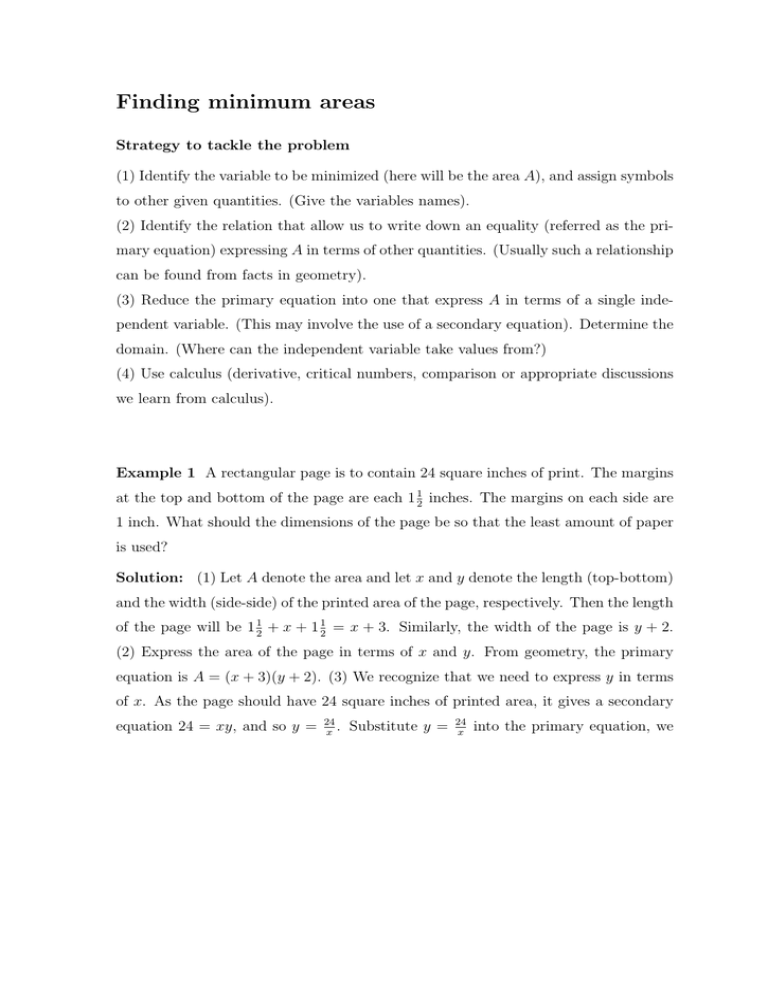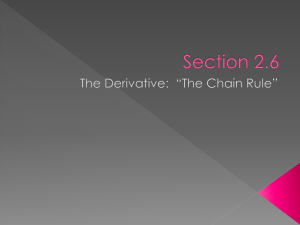Finding minimum areas
advertisement

Finding minimum areas Strategy to tackle the problem (1) Identify the variable to be minimized (here will be the area A), and assign symbols to other given quantities. (Give the variables names). (2) Identify the relation that allow us to write down an equality (referred as the primary equation) expressing A in terms of other quantities. (Usually such a relationship can be found from facts in geometry). (3) Reduce the primary equation into one that express A in terms of a single independent variable. (This may involve the use of a secondary equation). Determine the domain. (Where can the independent variable take values from?) (4) Use calculus (derivative, critical numbers, comparison or appropriate discussions we learn from calculus). Example 1 A rectangular page is to contain 24 square inches of print. The margins at the top and bottom of the page are each 1 21 inches. The margins on each side are 1 inch. What should the dimensions of the page be so that the least amount of paper is used? Solution: (1) Let A denote the area and let x and y denote the length (top-bottom) and the width (side-side) of the printed area of the page, respectively. Then the length of the page will be 1 12 + x + 1 12 = x + 3. Similarly, the width of the page is y + 2. (2) Express the area of the page in terms of x and y. From geometry, the primary equation is A = (x + 3)(y + 2). (3) We recognize that we need to express y in terms of x. As the page should have 24 square inches of printed area, it gives a secondary equation 24 = xy, and so y = 24 . x Substitute y = 24 x into the primary equation, we have 24 72 + 2 = 30 + 2x + . A = A(x) = (x + 3) x x Since x is a length, x > 0. Thus the domain of the function A(x) is x > 0, or [0, ∞). (4) Now we have successfully model the problem into one that finds the absolute maximum of a function A(x) on a closed interval [0, ∞). To apply calculus to find the maximum volume, we first compute the derivative A0 (x) = 2 − 27/x2 . Set A0 (x) = 0 to get the critical numbers x = 6 (the other solution x = −6 is not in [0, ∞)). Apply the first derivative test to conclude that x = 6 and y = of the page are x + 3 = 9 and y + 2 = 6. 24 6 = 4. Thus the dimensions

